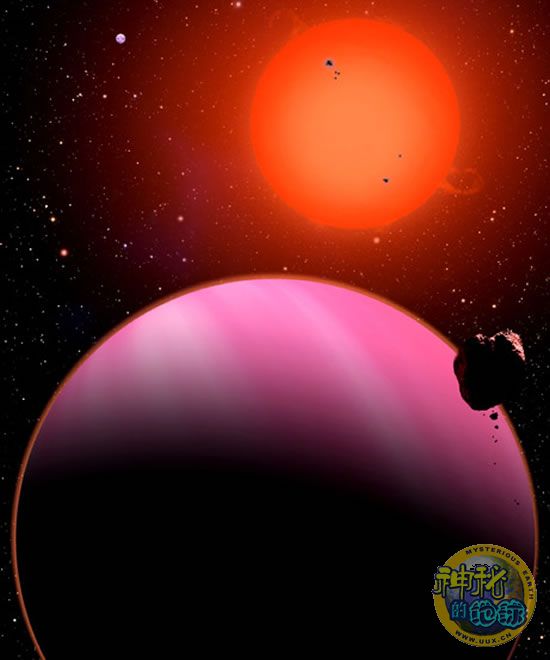Distant "Super Neptune" Discovered
A Neptune-like world 120 light-years from Earth is the smallest planet yet found outside our solar system using a method that looks for the dimming of distant stars.
As seen from Earth, the new world—dubbed HAT-P-11b—passes in front of its host star, periodically blocking the star's light. Using a network of small, automated telescopes, astronomers at the Harvard-Smithsonian Center for Astrophysics were able to use the changes in starlight to accurately measure the planet.
HAT-P-11b is 4.7 times the size of Earth and 25 times its mass. It orbits close to its parent star, a red dwarf slightly cooler than our sun, so its surface is roasted to about 1,100 degrees Fahrenheit (593 degrees Celsius).
The planet appears pink in the above artist's conception because astronomers think the normally blue gas giant would be colored by reddish light from the nearby star.
To date, astronomers using a variety of methods have found more than 330 planets orbiting distant stars, most of them gas giants bigger than Jupiter. As of January 2009, the smallest exoplanet found orbiting a sunlike star is thought to be MOA-2007-BLG-192-L b, a gaseous planet with 1.4 times Earth's mass that lies 3,000 light-years away.
—Victoria Jaggard
Image courtesy David A. Aguilar (CfA)












